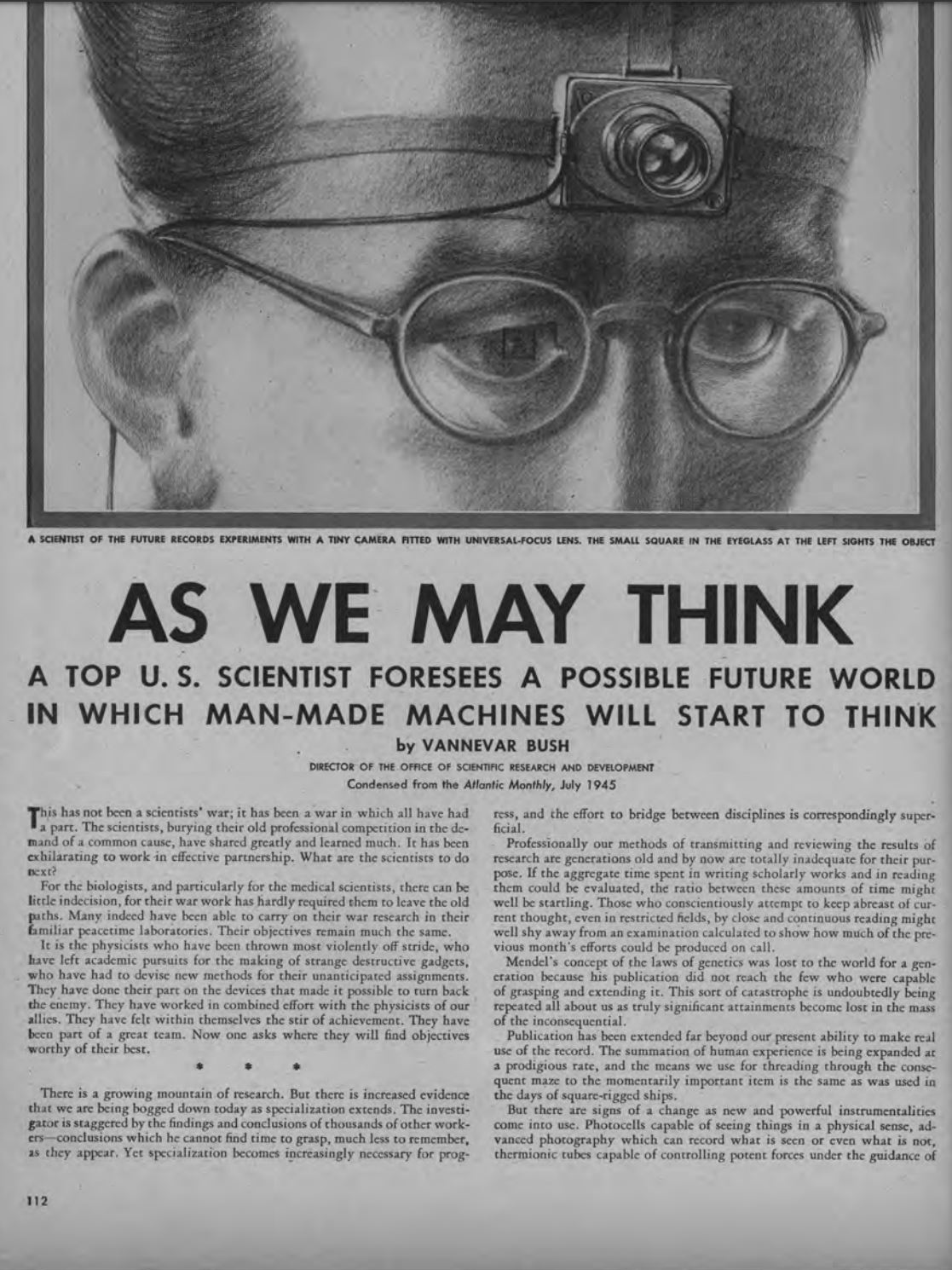Computer Lib & Dream Machine, From Memex and Hypertext to Modern Internet
In July 1945, as World War II was nearing its end and long before the invention of APARNET (known as the precursor to the modern Internet), an article, entitled “As We May Think,” was published in The Atlantic magazine. The author was Vannevar Bush, then chairman of the National Defense Research Committee (NDRC) and director of the Office of Scientific Research and Development (OSRD). In this article, Bush described a hypothetical adjustable microfilm viewer called a “memex”—a “mechanized private file archive and library” that will serve as “an enlarged intimate supplement to his [human] memory.”

Bush’s idea of memex and his vision of the future influenced generations of scientists and engineers who later laid the foundation of modern information technology, including J. C. R. Licklider and Douglas Engelbart. One of the most notable figures is the father of Hypertext and Hypermedia, Ted Nelson, a somewhat controversial figure in the computing world. Nelson founded the first hypertext project in 1960, with the aim to create “a world-wide system of electronic publishing, anarchic and populist, where anyone could publish anything, and anyone could read it.” He called it Xanadu, for the summer capital of Kublai Khan which later became a synonym for splendour and opulence. Ted Nelson dreamed that his project would become a holy temple of human memory and knowledge.
This attempt ultimately failed because Tim Berners Lee beat Nelson to the punch. Mocking Nelson’s failure, WIRED magazine even published an article titled “The Curse of Xanadu” in 1995, and describing it as “the longest-running vaporware story in the history of the computer industry.” However, as today’s Internet is increasingly fraught with problems, people have begun to return to the early days of computing, to seek inspiration from the Internet’s precursors. What we can learn from these pioneers, and what did they intend for the Internet from the beginning? This talk will narrate the forgotten history of the modern Internet and reveal the lies behind computer paradigms, to offer a better understanding of the true Internet.


Katt (Zihui) Gu
Katt (Zihui) Gu is currently a Ph.D. student at University of Illinois, Urbana-Champaign (on-leave) and also served as the Chief Compliance Officer at Shanghai-based high-tech startup Dimension. She has acquired a Master’s degree in Natural Resource and Environmental Science and a Juris Doctor Degree from University of Illinois, Urbana-Champaign, focusing on standardization of biofuel sustainability certification and probabilistic risk assessment in nuclear energy. Her current research direction is in the intersection of law and information science, and she has published several papers on Hong Kong Law Review, Asian Pacific Law Review, China Review and other well-known SSCI journals. She was also known as the drafter of Anti-996 license and was been interviewed by BBC, Wired, New York Times, CCTV and many other mainstream media.